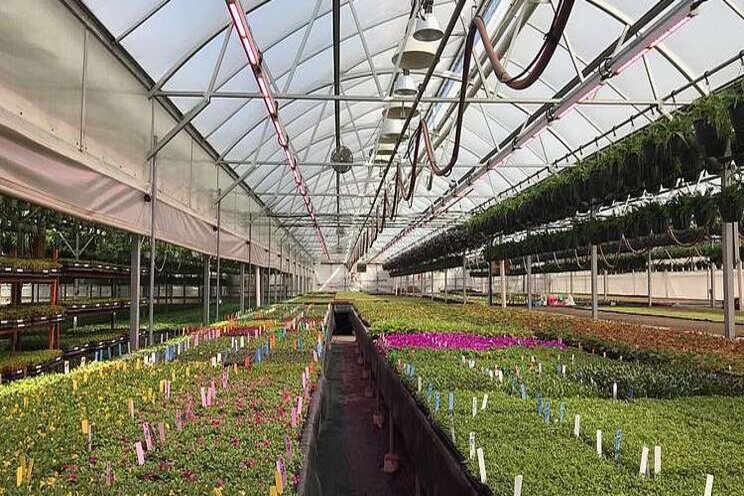Greenhouse pest management recommendations for 2021
Added on 06 May 2021

Insect management
MSU Extension entomology specialist for ornamentals, David Smitley has released his "2021 Greenhouse Pest Management with Insecticides" recommendations. These are the recommended products to control thrips, aphids, whiteflies, spider mites, broad and cyclamen mites, fungus gnats, mealybugs and Florida fern caterpillar.
Growers of greenhouse vegetables and greens can use the guide, "Recommended Insecticides for Common Greenhouse Pests on Vegetables, Herbs and Leafy Greens," when considering an insecticide application. The guide provides the names of the products, active ingredients, vegetable crops on the label and recommended pests they control. For more information on the guide, see the MSU Extension article, "Insecticides for common pests on greenhouse vegetables and transplants."
Download 2021 Greenhouse Pest Management with Insecticides Recommendations
Changes from 2020
There are four changes from the 2020 recommendations for greenhouse insect control. They include new products with novel modes of action and those that have now received a label for greenhouse and ornamental use:
- Notavo (clofentazine) is the new name for Applause, which was on previous year's recommendations. The product has been added for spider mite control and has the same active ingredient that is in Apollo. These products contain clofentazine which is in the class of tetrazines which have an IRAC Group number of 10A. Resistance should not be a problem.
- Ventigra (afidopyropen) earned an EPA label in 2018, it is a new insecticide to the greenhouse industry and is now listed for aphids, whiteflies and mealybugs. Plants sensitive to Ventigra include coleus, poinsettia (in bract), and impatiens and petunias when in flower. The insecticide is in the group 9D and is a good choice to manage resistance when in a rotation.
- Sarisa (cyclaniliprole) has been added for control of thrips, whiteflies and mealybugs. It has also been recently labeled for use in greenhouses. It is an IRAC group 28 insecticide. Other greenhouse products that belong to that group are Acelepryn (chlorantraniliprole) and Mainspring (cyantraniliprole).
- Pradia (cyclaniliprole and flonicamid) is a combination product containing the novel IRAC group 28 active ingredient, cyclaniliprole. It also contains the active ingredient in Aria so using it would be like using Sarisa and Aria together.
Disease managementMSU Extension plant pathologist Mary Hausbeck has released her new "2021 Greenhouse Disease Management" recommendations. The products are classified on a range from "A+" or "B/B-" team products. The "A" team products provide the best control for the diseases, and "B" team products are those that provide limited control and are good to include in a spray rotation. Hausbeck has also provided an updated "2021 Greenhouse Impatiens Downy Mildew Program" for both susceptible and impatiens downy mildew-resistant cultivars.Hausbeck and her colleagues have also developed a guide for disease management specifically for vegetable and herb crops. The guide provides the following information about each registered product for vegetable transplants and herbs: 1) active ingredient, 2) trade name of the product, 3) FRAC code (a guide for alternating products to delay/reduce pathogen resistance) and 4) re-entry interval. The disease recommendations are grouped by crop groups: 1) brassica, 2) cucurbit, 3) leafy, 4) fruiting and 5) herbs. Within each crop grouping, the table includes the target pathogen including: bacterial blight, downy mildew, leaf spot, powdery mildew, Phytophthora, Rhizoctonia and SclerotiniaDownload 2021 Greenhouse Disease Management Recommendations
Click here to learn more.
Photo by Heidi Lindberg, MSU Extension
Source: Michigan State University
Source: Michigan State University
More news















